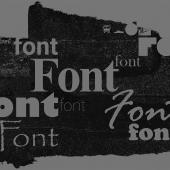
CHEAT SHEET
- Patent claim overload. Due to an increase in patent infringement claims, state and federal courts have set out to hold patent infringement plaintiffs to a higher standard of accuracy before they will entertain litigation.
- Invalidity and the Alice decision. The 2014 Alice Corp. v. CLS Bank Int’l Supreme Court decision gave patent defendants the ability to more easily avoid lawsuits by invalidating abstract ideas in a patent claim.
- Ends to a mean. Recent changes to the “means-plus-function” counterclaim require a plaintiff to be more specific when using vague “nounce” words to discuss the function of their patent.
- The law on your side. State and federal patent laws now require patent litigation plaintiffs to geographically file where their clients are directly incorporated.
Over the past 20 years, the number of patent litigation cases filed has increased sharply. At the same time, sky-high monetary demands and extraordinarily large awards for patent infringement have become more common. Fortunately for defendants, recent court decisions, changes in the federal rules, and proposed and enacted legislation provide new tools to combat such claims.
A successful defense in a patent litigation focuses on the complaint, the patent, and the accused product or device. Until recently, the complaint could be very general. The complaint was required only to correctly identify the parties, establish jurisdiction by the selected court, and recite sufficient facts to state a claim for relief against the defendant that was “plausible on its face.” The court could dismiss the action only if the complaint failed to meet these minimal requirements. Similarly, the patent has to be valid, and proving invalidity — even for the most dubious patents — would often require substantial resources to obtain an order granting summary judgment or gaining a verdict at trial. Often, this would take years after the institution of the lawsuit. With respect to the accused product or device, the plaintiff has to prove infringement — that is, the plaintiff must prove that the product contains each element of the cited claims of the patent. Until recently, a defendant found it difficult to limit the scope of a claim to what was actually invented.
This article addresses recent developments in patent law that provide patent litigation defendants with powerful new defenses against patent infringement lawsuits.
The complaint — A new pleading standard
One of the most significant changes to pleading standards was enacted via the December 2015 Amendments to the US Federal Rules of Civil Procedure (FRCP) — the abolition of the FRCP Appendix of form pleadings. These Amendments, which were approved by the US Supreme Court, create stricter pleading standards for complaints asserting direct patent infringement.
More specifically, prior to December 1, 2015, a plaintiff asserting patent infringement needed only to comply with Form 18 — a template for patent complaints included in the FRCP Appendix. Form 18 required only that a plaintiff (1) plead that the court in which the complaint is filed has jurisdiction; (2) plead that it is the sole owner of an issued US patent; (3) plead that a class of products made, sold, or used by the defendant infringes the issued patent; and (4) state a demand for damages and/or injunctive relief. This simple pleading was sufficient when it was adopted in 1938 because allegations of infringement at that time were more likely to involve mechanical apparatuses (like plows) or industrial processes, where simple allegations of infringement could be clearly understood and identified. However, as devices became more complicated and software became more prevalent, Form 18 enabled the mass-filing of form complaints against countless defendants without citing a specific product, which resulted in infringement defendants having insufficient notice of their allegedly infringing behavior.
With the 2015 amendments, however, parties alleging patent infringement will now need to adhere to the requirements set forward by the Supreme Court in Bell Atlantic Corp. v. Twombly and Ashcroft v. Iqbal. Under the Twombly and Iqbal standards, a complaint must set forward “sufficient factual matter, accepted as true, to state a claim that is plausible on its face” that “allows the court to draw the reasonable inference that the defendant is liable for the misconduct alleged.” The information required to meet these standards will vary by district and judge. However, additional details that will need to be pled include:
- Identification of specific claims (rather than just the patent) that are allegedly infringed;
- Identification of specific accused products that allegedly infringe the patent (rather than the classes of products permitted by Form 18); and,
- Explanation of how the asserted claims are infringed by the accused products.
For example, the following pleading would have been sufficient under Form 18:
On January 1, 2016, United States Letters Patent No. 9,999,999 was issued to the plaintiff for an invention in an electric motor. The plaintiff owned the patent throughout the period of the defendant’s infringing acts and still owns the patent. The defendant has infringed and is still infringing the Letters Patent by making, selling, and using electric motors that embody the patented invention, and the defendant will continue to do so unless enjoined by this court.
Now, a plaintiff should identify particular infringed patent claims and apply the elements of those claims to the defendant’s accused products. Moreover, the plaintiff must specifically plead other types of infringement (e.g., inducing or contributory infringement). These elevated pleading standards have resulted in longer, far more detailed patent litigation complaints.
Thus, plaintiffs must specifically articulate their infringement theories. This provides the respective defendants with means to assess the merits of infringement claims prior to discovery, both by examining the plaintiff’s infringement theories and by determining whether the accused product is actually produced by the defendant’s corporation. One incidental benefit to the defendant is the fact that the plaintiff can no longer file identical complaints against multiple defendants in an attempt to obtain multiple settlements with minimal effort. Under new standards, the plaintiff must tailor its complaints to each defendant’s purportedly infringing activities. Moreover, if a defendant receives a deficient complaint, it can move to dismiss all or part of the complaint. Often times, plaintiffs merely give lip service to certain infringement theories, such as indirect infringement and willfulness. Defendants can target those deficient allegations and get them dismissed from the lawsuit. Early motions to dismiss based on Twombly and Iqbal are a quick way for defendants to rid themselves of nuisance lawsuits.
It should be noted, however, that the requirements of the new rules fall far short of demanding that the plaintiff produce claim charts substantiating the claimed infringement. Thus, while vague complaints can be more easily addressed in a motion to dismiss the suit, the defendant may still have a less than perfect understanding of the theories behind the claims made against it.
Invalidity — A potentially early exit from the lawsuit
Section 101 of the Patent Act defines patent-eligible subject matter: “whoever invents or discovers any new and useful process, machine, manufacture, or composition of matter, or any new and useful improvement thereof, may obtain a patent therefor, subject to the conditions and requirements of this title.” Laws of nature, natural phenomena, and abstract ideas, however, were not deemed patentable.
Until relatively recently, Section 101 was at best a coarse filter for subject matter eligibility; the mere issuance of the patent was considered to be evidence that this hurdle had been surmounted. However, in 2014, the Alice Corp. v. CLS Bank Int’l Supreme Court decision gave new teeth to Section 101. Of the more than 250 federal court decisions invoking Section 101 since Alice, 70 percent have invalidated the asserted patent(s). At the Federal Circuit (the circuit court of appeals with exclusive jurisdiction over patent cases), only one case — DDR Holdings, LLC v. Hotels.com — has upheld a patent under Section 101 among over 30 Federal Circuit decisions applying Alice.
Thus, upon receiving a complaint for patent infringement where the claims are related to software or methods of business operation, it is imperative that a patent infringement defendant conduct an Alice review of the asserted claim. Specifically, the defendant needs to apply the Supreme Court’s two-step test for determining whether a patent claims an ineligible abstract idea or a patent-eligible application of an abstract idea.
First, a defendant must determine whether the patent claims at issue are directed to a patent-ineligible abstract idea. Courts have held that broad categories — such as intermediated settlement, advertising, retaining information in the navigation of online forms, and data recognition and storage — are abstract ideas. Likewise, fundamental economic practices long prevalent in society have been held to be abstract ideas, as have the ordered combination of steps having no particular concrete or tangible form. Thus, a patent litigation defendant should see if the asserted claim can be categorized as an “abstract” concept, such as a fundamental economic practice or method of organizing human activity.
The second step — if the claims are directed to an abstract idea — is determining whether the elements of the asserted claim transform the claim into a patent-eligible application. This can be described as a search for an inventive concept (i.e., an element or combination of elements that is sufficient to ensure that the claim amounts to significantly more than a claim upon the abstract idea itself). It is important to note that merely claiming that an abstract idea be performed on a “generic computer” or limiting the use of an abstract idea to a particular technological environment is not sufficient to confer patent eligibility.
While patents have been found invalid in most cases, DDR Holdings, LLC v. Hotels.com, stands as the exemplary Federal Circuit case to uphold a patent under Section 101. Recently, the Federal Circuit applied DDR Holdings to uphold a patent in Enfish, LLC v. Microsoft Corp., — F.3d —, 2016 WL 2756255 (Fed. Cir. May 12, 2016).
DDR Holdings dealt with a method of e-commerce in which certain affiliates allow vendors to advertise their products or services on the affiliate’s webpage. The core of the invention dealt with a way to circumvent the fact that a customer, clicking the vendor’s ad, would leave the affiliate’s webpage. The patent addressed that problem by directing a customer who clicked on a vendor’s ad to a hybrid webpage generated by the affiliate webpage. The customer would then be shown a composite of the third-party merchant’s product information with the look and feel of the affiliate’s webpage. The Federal Circuit held that the claims of this patent “stood apart” because the asserted claims did not merely recite the performance of some business practice known from the pre-internet world along with the requirement to perform it on the internet. Rather, both the specification and the claims defined a technical solution to a technical problem through the implementation of computer software in the context of e-commerce, thus including the requisite “inventive concept.”
Likewise, the recent Enfish case clarified that a relevant inquiry at step one of Alice is “to ask whether the claims are directed to an improvement to computer functionality versus being directed to an abstract idea.” Enfish, 2016 WL 2756255, at *4. Under Enfish, claims “directed to an improvement in the functioning of a computer” are not abstract ideas, while claims “simply adding conventional computer components to well-known business practices,” claims reciting “a purely conventional computer implementation of a mathematical formula,” and claims reciting “generalized steps to be performed on a computer using conventional computer activity” are invalid.
Therefore, motions to dismiss under Section 101 can provide an early resolution to a patent litigation action and also invalidate the patent. Such Section 101 motions should be considered at the motion to dismiss stage under Federal Rule 12(b)(6) or at the motion for judgment on the pleadings stage under Federal Rule 12(c). The standards for dismissal are the same. The court must therefore decide whether, in the light most favorable to the plaintiff, the complaint states a valid claim for relief. While courts have, to date, granted 70 percent of such motions, some courts are deferring this decision until after claim construction, compelling the parties to litigate the case for months without resolution of the Section 101 issues. Therefore, a patent litigation defendant should consider any factual or claim-construction issues that could affect the court’s appetite for deciding the Section 101 issue.
DDR
The patent system analyzed in DDR holdings. US Patent No. 7,818,339,claimed:
19. A system useful in an outsource provider serving web pages offering commercial opportunities, the system comprising:
(a) a computer store containing data, for each of a plurality of first web pages, defining a plurality of visually perceptible elements, which visually perceptible elements correspond to the plurality of first web pages;
(i) wherein each of the first web pages belongs to one of a plurality of web page owners;
(ii) wherein each of the first web pages displays at least one active link associated with a commerce object associated with a buying opportunity of a selected one of a plurality of merchants; and
(iii) wherein the selected merchant, the outsource provider, and the owner of the first web page displaying the associated link are each third parties with respect to one other;
(b) a computer server at the outsource provider, which computer server is coupled to the computer store and programmed to:
(i) receive from the web browser of a computer user a signal indicating activation of one of the links displayed by one of the first web pages;
(ii) automatically identify as the source page the one of the first web pages on which the link has been activated;
(iii) in response to identification of the source page, automatically retrieve the stored data corresponding to the source page; and
(iv) using the data retrieved, automatically generate and transmit to the web browser a second web page that displays: (A) information associated with the commerce object associated with the link that has been activated, and (B) the plurality of visually perceptible elements visually corresponding to the source page.
Noninfringement — Limitation of claim scope
Construing asserted patent claims as “means-plus-function” was a rare, but useful way to limit the scope of a functional claim asserted by a plaintiff. Specifically, 35 U.S.C. § 112, para. 6, strikes a balance in allowing patentees to express a claim limitation by reciting a function to be performed (instead of reciting the structure for performing that function), while placing specific constraints on how such a limitation is to be construed. This often occurs by restricting the scope of coverage to only the structure, materials, or acts described in the specification as corresponding to the claimed function and equivalents thereof. However, the provision was only invoked by the presence of the word “means” in the claim. Thus, in the narrow situations, where a claim was specifically drafted as a “means…for” or “step…for” performing a function, defendants could use this provision to limit the scope of asserted claims to the structure disclosed in the patents. Patent prosecutors thus did their best to avoid using such language when preparing patent applications, thereby limiting the applicability of this defense tactic.
The application of 35 U.S.C. § 112, para. 6 was greatly expanded in the 2015 Williamson v. Citrix Online, LLC decision, which held that merely because an element does not include the word “means” does not automatically prevent that element from being construed as a means-plus-function element. Instead, in making the assessment of whether the limitation in question is a means-plus-function term, the courts will now look at whether the words of the claim are understood by persons of ordinary skill to have a sufficiently definite meaning as the name for structure. Thus, courts have subsequently found terms that did not use the term “means” but used generic “nounce” words, such as “module” are nonetheless subject to interpretation as a means-plus-function limitation. Further, such means-plus-function limitations are limited to the disclosure in the patent specification of adequate “corresponding structure” to perform the claimed function.
The implications of the Williamson decision for a patent litigation defendant are twofold. First, this decision bolsters noninfringement arguments to the extent the structure disclosed in the specification is different from the accused structure. A patentee can no longer point merely to similar functionality in an accused device to show infringement. Second, many patents do not disclose any structure in the patent specification, or at most discuss a “black box” that is described only by its functionality. In such a case, the patent would be invalid as being indefinite. Therefore, the patent litigation defendant should closely examine the claims to see if there are generic terms — such as “unit,” “module,” “entity,” “mechanism,” or other nonce words — that do not actually identify a known structural component and that are merely described by their functionality. This sort of claiming may now bolster the defendant’s noninfringement or invalidity arguments.
Europe’s proposed unified patent court
Europe is seeking to streamline its complex Patent system under the European Patent Convention (EPC). Currently there are forty EPC contracting states, including all twenty-eight EU members. European patents are granted by the European Patent Office, however those patents are enforced and defended on a national basis. That is about to change, however, with the proposed Unified Patent Court. The Unified Patent Court (UPC) will be a court common to the Contracting Member States and thus part of their judicial system. It will have exclusive jurisdiction with respect to European patents. The local or regional divisions of the UPC dealing with patent infringement cases will be able to (1) proceed with both the infringement action and the counterclaim for revocation and request the president of the Court of First Instance to allocate from the pool of judges a technically qualified judge with qualifications and experience in the field of technology concerned; (2) refer the counterclaim for decision to the central division and suspend or proceed with the infringement proceedings; or (3) with the agreement of the parties, refer the whole case for decision to the central division. The UPC can thus choose to bifurcate proceedings and deal with infringement and revocation actions in two separate proceedings. Both the bifurcation option and the application of “loser pays” in the UPC may deter plaintiffs from pursuing patent infringement at the UPC.
Attorneys’ fees — New opportunities to recoup litigation expenses
Although not strictly a tool in an accused infringer’s kit of defenses, recent changes regarding the recovery of attorneys’ fees may have a chilling effect on a plaintiff’s appetite to continue litigation.
Under Section 285 of the Patent Statute, courts have discretion to award reasonable attorneys’ fees in patent infringement cases that are deemed “exceptional.” The Federal Circuit noted that the threat of attorneys’ fees under Section 285 is the only deterrent to the improper filing of clearly unwarranted suits on invalid or unenforceable patents. However, until recently, it was nearly impossible for a patent litigation defendant to recoup its attorneys’ fees.
On April 29, 2014, the US Supreme Court issued its decisions in Octane Fitness, LLC v. ICON Health & Fitness, Inc. and Highmark Inc. v. Allcare Health Management System, Inc. These decisions made it easier for a prevailing party in a patent litigation to receive attorneys’ fees in “exceptional cases” under 35 U.S.C. § 285. More specifically, in Octane, the Supreme Court held that a § 285 “exceptional” case is simply one that stands out from others with respect to the substantive strength of a party’s litigating position (considering both the governing law and the facts of the case) or the unreasonable manner in which the case was litigated. District courts may now determine whether a case is “exceptional” on a case-by-case exercise of their discretion, considering the totality of the circumstances. The Supreme Court identified a “nonexclusive” list of factors that a district court may consider, including “motivation,” “objective unreasonableness (both the factual and legal components of the case),” and the “need in particular circumstances to advance considerations of compensation and deterrence.” In Highmark, the Supreme Court reined in the Federal Circuit’s ability to overturn the awards by setting an “abuse-of-discretion” standard of review for awards of attorneys’ fees.
Patent litigants and district courts alike have been empowered by the new standards set in the Octane and Highmark rulings. Prior to the rulings, district courts granted 13 percent of attorneys’ fee motions (based on a study by the Federal Circuit Bar Association). However, since the rulings, district courts have granted between 40 and 50 percent of attorneys’ fee motions — awarding fees in over 25 cases. It is clear that attorneys’ fees are now up for grabs in patent litigation, and many litigants have latched on to that fact. Thus, a claim for attorneys’ fees can be a valuable tool for a party accused of infringing a patent that turns out to have been procured through less than equitable means, or where the plaintiff ’s conduct exceeds the bounds of zealous advocacy.
In order to set a clear record that plaintiff ’s actions are “exceptional” under Octane, a patent litigation defendant should begin to establish a record of the flaws in the plaintiff ’s infringement claims early in the case, which will support a lack of basis for the plaintiff ’s legal positions. Providing notice of deficiencies in the infringement contentions early on and repeatedly throughout the case may lay a foundation for establishing that the case is an “exceptional” one entitling the defendant to fees based on a deficient legal position. Defendants have effectively used this early alert to the plaintiff that they may be exposed to attorney fees to spur favorable settlements. “Exceptional” cases can also be found based on a plaintiff ’s litigation conduct. Examples include the submission of “sufficiently egregious” expert testimony excluded under Daubert and the repeated presentation of arguments that have already been precluded by the court.
It is important to remember that that when a motion for fees is filed, the attorney bills will be submitted to the court for evaluation. To justify the costs, the defendant’s firms will need to provide a description of the background and experience of each lawyer or staff member that has billed to the matter so that the court can evaluate the reasonableness of the hourly billing rate. Thus, if a patent litigation defendant is planning to move for fees, its attorneys should take extra care to ensure that billing details are in order and be sure not to include sensitive, attorney-client privileged communication in the billing detail.
Patent litigation in Japan
Japan has no jury trial or thorough discovery system comparable to the system in the United States, and treble damages are not allowed in Japan. For a long time, Japanese courts were not a popular venue for patent infringement cases because it was burdensome for parties, courts were slow to enforce patent rights, and the amounts of damages awarded by Japanese courts were usually small. Recently, however, Japan’s Patent Law and the Code of Civil Procedure has been amended to speed up Japanese litigation timelines. Moreover, the amount of damages awarded by Japanese courts has been increasing. Both trends suggest that Japanese patent litigation is becoming a more attractive way to resolve patent disputes. Thus, Japan may be a popular patent litigation venue in the future.
Changes in statutory law
State law patent reforms
Twenty-nine states have passed laws to attempt to combat the negative impact of plaintiffs who file multiple litigation actions, often without a sufficient basis for their allegations. www.ncsl.org/research/financial-services-and-commerce/patent-trolling-legislation.aspx. These laws typically set out multiple factors defining what constitutes bad faith or good faith patent assertion, and outlaw “bad faith” patent assertion on consumer protection grounds. These state laws and proposed bills also contain a range of remedies for a violation of the provisions, including posting bond and exemplary damages.
For example, Vermont’s law lists factors that a court may consider as evidence that an entity has made a bad faith assertion of patent infringement. 9 V.S.A. Ch. 120 §§ 4195-4199 (2013). These factors include: the demand letter does not contain the patent number, name and address of the patent owner(s) or assignee(s), or factual allegations concerning the specific areas in which the target’s products, services, and technology infringe; the claimant failed to conduct an analysis comparing the patent claims to the target’s products, services, and technology before sending the demand letter. The demand letter demands payment of a license fee or response within an unreasonably short period of time; and the claim or assertion of patent infringement is deceptive. Under the Vermont law, a court may require a bond in an amount equal to a good faith estimate of the target’s costs to litigate the claim.
Likewise, Florida’s law seeks to discourage “bad faith” assertion of patent rights and create a number of tools patent infringement defendants (and other recipients of demand letters) could use to ward off expensive patent litigation. H.B. 1181 (Fla. 2016). These tools include requiring the patent owner to post a bond of up to US$250,000 to proceed with the case, as well as punitive damages. Laws passed or proposed in other states contain similar lists of factors.
A violation of any provision of the Nebraska Patent Abuse Prevention Act constitutes a deceptive trade practice. NB L.B. 677 (adopts the Nebraska Patent Abuse Prevention Act) (2014). Also under the Nebraska law, any entity who sends, transmits, or otherwise conveys demand letters to 25 or more targets in any 365 day period must notify the state attorney general.
To date, allegations of direct violations of these state laws have been rare, but the state patent reform laws do provide a broad range of remedies and factors that could make them an important component of a defense to an assertion of patent infringement. A patent litigation defendant should determine whether the state in which it has been sued has such a law and consider asserting a counterclaim under that state’s patent litigation law. It may put pressure on the plaintiff to dismiss the suit or seek settlement. Further, existing state laws outlawing false or bad faith assertions of patent infringement may also discourage bad faith patent litigation. The application of state laws, however, will be unpredictable in view of the broad scope of multi-factor tests, the amount of discretion given to the court, and potential preemption issues.
Inter Partes review
If there is good prior art, a patent litigation defendant may seek inter partes review (IPR). The advantages are well documented: no presumption of patent validity; lower burden of proof (preponderance of evidence in IPR versus clear and convincing in district court); broader claim construction (broadest reasonable interpretation in IPR versus the single correct construction as understood by a person of ordinary skill in the art in district court); lower costs and time (18-month timetable for IPR versus unpredictable timetable in district court). Many courts stay their cases pending the resolution of inter partes review, thereby delaying litigation costs for a patent litigation defendant. Success rates for challenging patents through IPR are still very high, approximately 70 percent of petitions for IPRs are granted, instituting review of the patents, and of those instituted, 86 percent are invalidated (at least one claim).
New federal proposals
Attempts at patent reform on the federal level have taken a different approach than at the state level.
Most recently, the proposed “Venue Equity and Non-Uniformity Elimination (VENUE) Act of 2016” would restrict jurisdiction over patent suits to courts where the parties are incorporated or where they have physical facilities, tied to either the development of technology-at-issue or the alleged infringement. The VENUE Act would thus make it more difficult for a plaintiff to file a suit in districts lacking a meaningful connection to the suit. For example, a California inventor could no longer sue small California companies in the Eastern District of Texas without any physical connection to the region if the VENUE Act was signed into law. In 2015, about 44 percent of all patent cases filed in the entire United States were filed in the Eastern District of Texas, where only about one percent of the total population resides.
The proposed PATENT Act is another bill intended to curb abusive practices in patent litigation through provisions such as fee-shifting, limitations on discovery, disclosure of real party-in-interest information, and stays of customer suits. For fee shifting, the PATENT Act applies the same standard — a court may shift fees if the non-prevailing party’s position or conduct was not objectively reasonable — but it shifts the burden of proof to the winner. Judges can shift fees only if the winner shows that the losing party was unreasonable. The bill also allows the defendant to move for fees if the patent owner unilaterally withdraws from the case before a trial. Further, where the plaintiff is a shell company (i.e., an entity that can assert patents without worrying about losing its assets, because it does not have any), the PATENT Act allows a defendant the opportunity to identify “interested parties,” which the court can hold financially accountable. The PATENT Act further delays discovery until certain initial trial motions (to dismiss, to change venue, or to sever accused infringers) are resolved.
Given that this is an election year, we do not foresee the imminent passage of either bill, but a patent litigation defendant should closely monitor each of these bills as they journey through Congress.
Conclusion
Patent litigation defendants now have additional tools with which to ward off suits by litigious plaintiffs. Stricter pleading standards and tests for patentability have given patent litigation defendants earlier opportunities to dispose of litigation. Further, courts have begun to restrict patents to the inventions claimed, making it more difficult for creative plaintiffs to expand the scope of a patent in the litigation context. Plaintiffs that overreach are now more likely to get sanctioned for their behavior. Likewise, state and federal governments have drafted legislation that further seeks to combat the negative impacts of plaintiffs who serially file patent infringement suits against multiple defendants. Therefore, patent litigation defendants may have the opportunity to increase their chances of prevailing against a plaintiff quickly and decisively.






